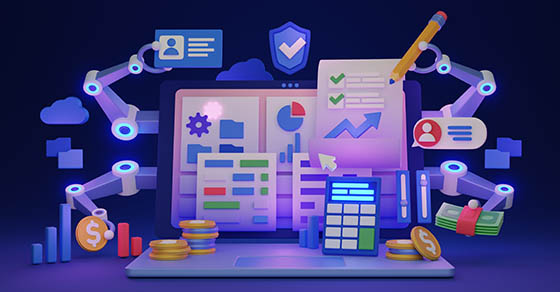
When buying new accounting software or upgrading your existing solution, it’s critical to evaluate your options carefully. The right platform can streamline operations and improve financial reporting accuracy. However, the wrong one can result in reporting delays, compliance risks, security breaches and strategic missteps. Here are some common pitfalls to avoid.
Relying on a generic solution
You might be tempted to choose a familiar, off-the-shelf software product. While this may seem like a practical solution, if the software isn’t tailored to your company and industry, you may be setting yourself up for inefficiencies and frustration later.
For example, construction firms often need job costing, progress billing and retainage tracking features. Not-for-profits need fund accounting and donor reporting features. Retailers may benefit from real-time inventory management and multi-channel sales integrations. Choosing a one-size-fits-all tool may result in a patchwork of manual fixes and workarounds that undermine efficiency and add risk.
Overspending or underspending
Accounting systems vary significantly in their features and costs. It’s easy to overspend on software with flashy dashboards and advanced add-ons — or to settle on a no-frills option that doesn’t meet the organization’s needs. Both extremes carry risk.
The ideal approach lies somewhere in the middle. Start by benchmarking your transaction volume, reporting complexity, staff skill levels and support infrastructure. Then build a prioritized feature “wish list” and set a realistic budget. Avoid paying for functions you’ll never use, but don’t underinvest in critical capabilities, such as automation, scalability or integration. Think strategically about where your business will be a year or two from now — not just today.
Clinging to legacy tools
Upgrading or moving to a new accounting platform is a major undertaking, so it’s easy to put these projects on the back burner. But waiting too long can lead to inefficiencies, data inaccuracies and missed opportunities. Modern platforms offer cloud-based access, AI-driven automation and mobile functionality — features that older systems can’t match. As more businesses shift to hybrid work and remote collaboration, staying current is essential for accuracy and speed.
If your financial closes take too long, if reports don’t reconcile easily or if you can’t view your numbers in real time, it may be time to modernize. Treat accounting software upgrades as part of ongoing business improvement — not an occasional “big project.”
Test your system periodically to ensure efficient data flows, accurate reconciliations and useful management reports. This exercise moves you from merely “keeping books” to driving financial insight.
Ignoring integration, mobility and security
In the past, accounting software was a standalone application, and data from across the company had to be manually entered into the system. But integration is the name of the game these days. Your accounting system should integrate with the rest of your tech suite — including customer resource management (CRM), inventory and project management platforms — so data can be shared seamlessly and securely. If you’re manually entering data into multiple systems, you’re wasting valuable resources.
Also consider the availability and functionality of mobile access to your accounting system. Many solutions now include apps that allow users to access real-time data, approve transactions and record expenses from their smartphones or tablets.
Equally important is cybersecurity. With financial information increasingly stored online, prioritize systems with data encryption, secure cloud storage and multi-factor authentication. Protecting your data means protecting your business reputation.
Leaving your CPA out of the loop
Choosing the right accounting software isn’t just an IT project — it’s a strategic investment decision for your business. Our team has helped hundreds of companies select accounting technology tools that fit their needs. Let’s get started on defining your requirements, evaluating software features and rolling out a seamless implementation plan. Contact us to discuss your pain points, training needs and budget. We can help you find a solution that works for your business.
© 2025




